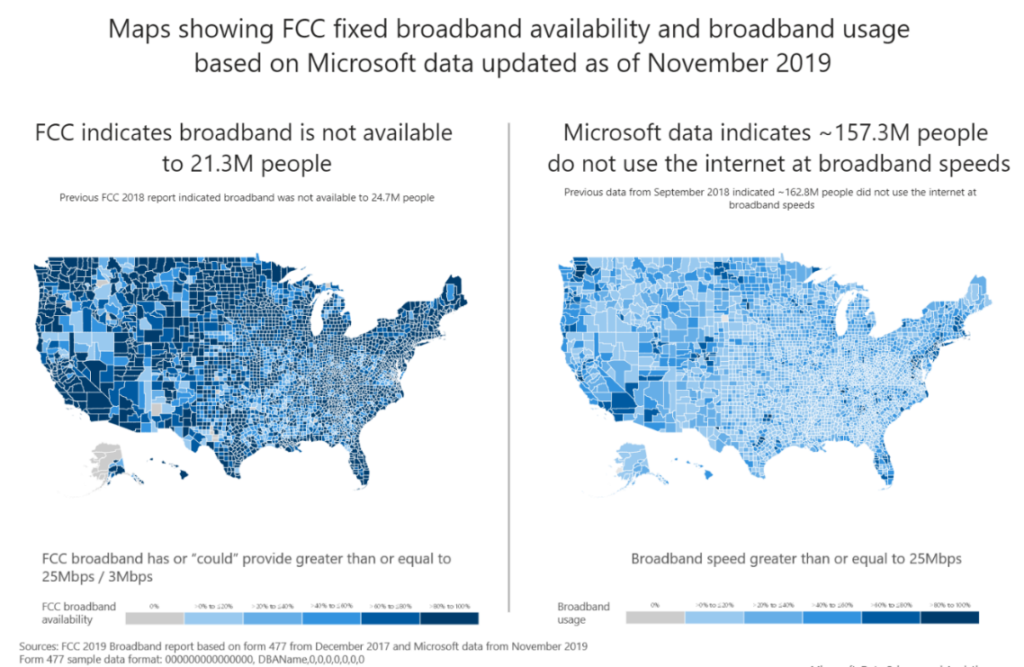There’s a disparity between what Internet Service Provider (ISP) companies are reporting for broadband access and what people living in rural communities are actually experiencing. According to the FCC, nearly 95% of Americans have access to broadband. This is an amalgamation of what ISPs are self-reporting to the agency. When you look at actual usage, however, it drops to nearly half of all Americans. Essentially, 157 million Americans cannot use broadband on any regular basis.
Microsoft, as part of their AirBand initiative, has been collecting data on broadband (25 Gb speed, or greater) across the country. The results are startling.
(See the link to the article here. It has additional data and information.)
There may be connectivity in the community or on the street, but it doesn’t reach houses or businesses, it’s too expensive to connect, or services are over-reported as being available when they actually aren’t. Let me give you some examples I’ve seen in my travels:
- A cellphone customer suddenly can’t get access. She calls the company to ask why. They state that there is coverage in her area and she should have signal. They also mention that one of the towers was taken down but that shouldn’t affect her access. She’s on a 2-year contract which she can’t eliminate. She doesn’t have access. The company says she does. She’s stuck.
- An ISP brings connectivity to the street, but doesn’t connect it to the farmhouse, because the house is half a mile inside the farm. To conserve energy and work time, farmhouses are centered within the farm, not placed at the edge. The company requires $10,000 to complete the full connection, because of the distance. For many farmers, that is their entire annual salary.
- The Covid-19 lockdown has closed libraries and coffee shops where so many people usually access the internet. Without these resources, they are essentially cut off from most connectivity, including governmental services.
Correctly collected and analyzed data is crucial to understanding what is really going on in the world. If all of our important resources, such as unemployment, social security, and access to our elected representatives, are only available online, why isn’t access required in all our towns and rural spaces? Why do we still think that connectivity is a luxury?

